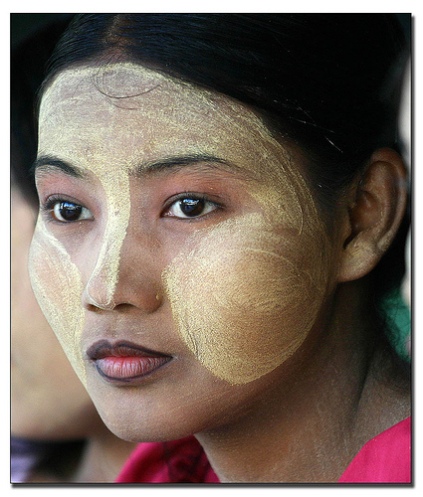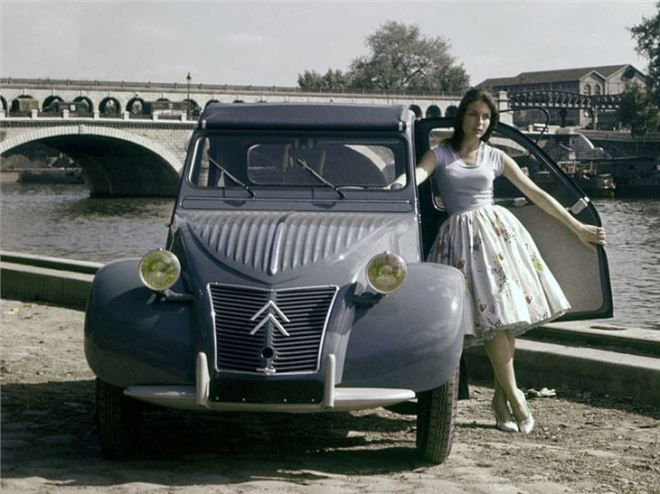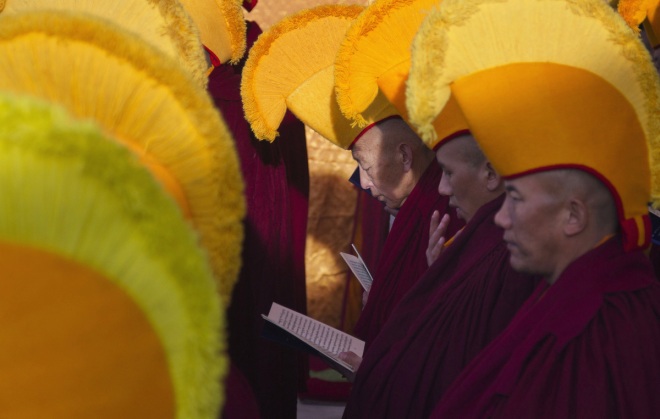Vienna, 25 January 2019
A while back, while my wife and I were drinking an Earl Grey tea, I wondered out loud what gave the tea its particular taste. Bergamot, my wife replied. Bergamot? Since then, I have been wondering off and on – more off than on – just what exactly this Bergamot stuff was. When, a few days ago, we were cozily ensconced in a café having an Earl Grey tea, I decided that the moment had come to act. It was time for me to open the internet and disappear down one of those on-line rabbit holes I am so fond of falling down, this time in search of the elusive bergamot.
It wasn’t actually all that elusive. I immediately discovered that “bergamot” was actually the bergamot orange, one member of that seemingly vast and global tribe of citrus fruits. I was no end pleased to find this out, since I am very fond of the citrus family. I had great fun writing a post some time ago about one of its members, the citron. As seems to be usual in this family of fruits which happily and incestuously hybridize with each other, the bergamot orange’s precise genealogy is somewhat confused, but the consensus currently is that it is a hybrid of sweet lime and sour orange. This photo shows the fruit on the tree.
 And this photo is a close-up of the ripe fruit.
And this photo is a close-up of the ripe fruit.
 I think the family resemblance is fairly clear, no?
I think the family resemblance is fairly clear, no?
90% of the bergamot trees grown commercially in the world are to be found in one small corner of southern Italy, in the ball of Italy’s foot to be precise: in the communes of Brancaleone, Bruzzano Zeffirio and Staiti in the province of Reggio Calabria. Here is a photo of one of the bergamot orchards in Brancaleone, down along the banks of a very dry river bed.
 For those of my readers who, like me, have never seen the fruit and have never tasted it, I can report that “the juice tastes less sour than lemon but more bitter than grapefruit”. As readers can imagine, such a taste does not lend itself to the fruit being eaten like a sweet orange. The best one can do is to substitute it for lemon wherever one might use lemon juice: tea, for instance, since tea started this post. And if any of my readers find themselves in the island of Mauritius, they should ask around because it seems that the islanders do make a drink out of it there.
For those of my readers who, like me, have never seen the fruit and have never tasted it, I can report that “the juice tastes less sour than lemon but more bitter than grapefruit”. As readers can imagine, such a taste does not lend itself to the fruit being eaten like a sweet orange. The best one can do is to substitute it for lemon wherever one might use lemon juice: tea, for instance, since tea started this post. And if any of my readers find themselves in the island of Mauritius, they should ask around because it seems that the islanders do make a drink out of it there.
No, the real glory of this fruit, and the primary reason why anyone bothers to grow it commercially, is the essential oil which can be squeezed out of its rind: a dark green elixir of chemicals with such names as limonene, linalool, and bergamottin (I love these wonderful names they used to give chemicals! Not like the dreary modern ones: (E)-4-[(3,7-Dimethyl-2,6-octadienyl)oxy]- 7H-furo[3,2-g][1]benzopyran-7-one – the “proper” name of bergamottin, for instance).
 Its major use is as an ingredient in perfumes, fragrances, colognes, and the like. But before getting into that, let me complete the story of Earl Grey tea, which after all kicked off this post.
Its major use is as an ingredient in perfumes, fragrances, colognes, and the like. But before getting into that, let me complete the story of Earl Grey tea, which after all kicked off this post.
To answer my own question, Earl Grey tea gets its particular taste from the addition of bergamot essential oil to its base of black tea leaves. The question is, why was this essential oil ever added to tea leaves in the first place? And here I have to say that a lot of fanciful if not downright ridiculous stories have been invented. Before describing them – briefly, they are so silly – I need to introduce the Earl Grey whose name got attached to the tea. He was 2nd Earl Grey, who lived from 1764 to 1845.
 He was active in politics, eventually ending up as Prime Minister for a few years. He’s not terribly well known (at least, I don’t remember his name ever being mentioned in my English history classes at primary school). Yet he was responsible for one very great thing during his premiership: the abolition of slavery throughout the British Empire. He was also author of the Great Reform Bill.
He was active in politics, eventually ending up as Prime Minister for a few years. He’s not terribly well known (at least, I don’t remember his name ever being mentioned in my English history classes at primary school). Yet he was responsible for one very great thing during his premiership: the abolition of slavery throughout the British Empire. He was also author of the Great Reform Bill.
So, then, how did the name of this very worthy member of the British aristocracy get associated with a bergamot-flavoured tea? I cite here a paragraph from a tea-related site, which I think sums up the silly stories doing the rounds: “There are stories of good deeds in China that resulted in the recipe for the tea coming to his ownership. Another version tells how the blend was created by accident when a gift of tea and bergamot oranges were shipped together from diplomats in China and the fruit flavour was absorbed by the tea during shipping. Yet another version of the story involves a Chinese mandarin friend of the Earl blending this tea to offset the taste of minerals in the water at his home”. None of which is credible because Earl Grey never had any real connections with China. But ignoring that, his wife, Lady Grey, the stories go on, used the tea in her tea parties. It proved so popular with her posh friends that they asked if they could get it too. So then Lord Grey graciously shared the recipe with Jacksons of Piccadilly, a purveyor of fine teas to the posh classes. The latter part of this story was certainly pushed by Jacksons, as this ad from the 1920s attests.
 However, the reality appears to be much seamier. It seems that British tea merchants were surreptitiously adding bergamot essential oil to their low-value black teas to pass them off as a superior – and therefore more expensive – product (at least one company faced charges for doing so in 1837). And the superior product which it is speculated they might have been trying to emulate was … lapsang souchong! It pleases me no end to know that since I have written a post about this tea, which happens to be our favourite tea. At some point, perhaps through Jacksons of Piccadilly’s vigorous marketing efforts, flavoring black tea with bergamot became respectable, and the rest, as they say, is history. In case any of my readers decide to rush off and find themselves some Earl Grey tea made by Jacksons of Piccadilly, I regret to inform them that the company was bought up by Twinings in the 1990s. The nearest you will get to Jacksons of Piccadilly’s Earl Grey tea is this:
However, the reality appears to be much seamier. It seems that British tea merchants were surreptitiously adding bergamot essential oil to their low-value black teas to pass them off as a superior – and therefore more expensive – product (at least one company faced charges for doing so in 1837). And the superior product which it is speculated they might have been trying to emulate was … lapsang souchong! It pleases me no end to know that since I have written a post about this tea, which happens to be our favourite tea. At some point, perhaps through Jacksons of Piccadilly’s vigorous marketing efforts, flavoring black tea with bergamot became respectable, and the rest, as they say, is history. In case any of my readers decide to rush off and find themselves some Earl Grey tea made by Jacksons of Piccadilly, I regret to inform them that the company was bought up by Twinings in the 1990s. The nearest you will get to Jacksons of Piccadilly’s Earl Grey tea is this:
 Or perhaps readers might decide they want to try making their own Earl Grey tea, in which case here is a recipe that I picked up on the net.
Or perhaps readers might decide they want to try making their own Earl Grey tea, in which case here is a recipe that I picked up on the net.
Add 5-20 drops of bergamot essential oil into a wide-mouthed mason jar: 5 drops yields a light bergamot flavour while 20 drops will make a strong version. Swirl the oil around the inside of the jar to coat the sides evenly. Next, pour in one cup of black tea leaves. Cap the jar and shake vigorously to help spread the essential oil over all of the tea leaves. Let it sit for anywhere from 12 hours to 3 days to allow the oil to properly infuse the leaves.
For those who like a really light Earl Grey tea – and who happen to have access to fresh bergamot oranges – I also saw a suggestion of adding air-dried bergamot rind to black tea leaves.
I can now return to the major use of bergamot essential oil, in the perfumery business. It may interest readers to know that bergamot is used in more than 65% of women’s perfumes and nearly half of men’s fragrances. I suspect that the one perfume I ever wrote a post about, Chanel’s Chance Eau Fraîche, contains it, although the ingredient is listed generically as “citrus”. This popularity of bergamot with perfumers started with eau de Cologne, so it seems right to explore this eau a little.
Here, we have another product whose genesis is shrouded in a certain amount of confusion, although not quite as much as in the case of Earl Grey tea. As the name suggests, eau de Cologne was invented in Cologne, Germany, in the first years of the 1700s. But its inventor was not German (or Colognian since Germany did not yet exist), he was Italian (or Savoyard since Italy did not yet exist). His name was Giovanni Paolo Feminis.
 Feminis looks like a prosperous burgher in this painting, but that was after he had made his money from his perfume. He was born poor in the tiny village of Crana on the outskirts of the somewhat bigger village of Santa Maria Maggiore, located in an Alpine valley in the Duchy of Savoy (now the province of Piedmont).
Feminis looks like a prosperous burgher in this painting, but that was after he had made his money from his perfume. He was born poor in the tiny village of Crana on the outskirts of the somewhat bigger village of Santa Maria Maggiore, located in an Alpine valley in the Duchy of Savoy (now the province of Piedmont).
 He left his natal village quite young. I think I can understand why he decided to up sticks – historically, poverty levels in Alpine valleys were always high – but quite why he ended up in Germany I do not know, nor why he decided to make a perfume, nor why he decided to add bergamot essential oil to the mix. But all of these things he did, and in doing so he changed the face of perfumery for ever. His product became all the rage with Kings and Queens, Dukes and Duchesses, Barons and Baronesses – in a word, all the posh classes – throughout Europe. Its brightness, its lightness, compared favourably with the perfumes then on offer, and the bottles flew off the shelves as they say.
He left his natal village quite young. I think I can understand why he decided to up sticks – historically, poverty levels in Alpine valleys were always high – but quite why he ended up in Germany I do not know, nor why he decided to make a perfume, nor why he decided to add bergamot essential oil to the mix. But all of these things he did, and in doing so he changed the face of perfumery for ever. His product became all the rage with Kings and Queens, Dukes and Duchesses, Barons and Baronesses – in a word, all the posh classes – throughout Europe. Its brightness, its lightness, compared favourably with the perfumes then on offer, and the bottles flew off the shelves as they say.
Inevitably, many competitors sprang up in Cologne itself and, with time, in other cities (as, by the way, they did in the case of Early Grey tea; the small print at the end of the Jacksons ad above attests to this). A good portion of these competitors all belonged to a large Italian family with the surname Farina. Amazingly, not only were they Italian like Feminis but they all hailed from the same village as he did: it seems they were attracted like bees to an especially good nectar when one of their own made it good. One of the Farinas, Giovanni Antonio Farina, was actually Feminis’s second-in-command. On Feminis’s death, he inherited the business and the recipe. But industrial espionage must have been rife in Cologne, because all the other competing Farinas, in fact everyone in the eau de Cologne business, had similar recipes. And all included bergamot essential oil.
One of the most successful of this large tribe of Farinas was Giovanni Maria Farina, uncle to Giovanni Antonio Farina. He built a factory in Cologne, the Johann Maria Farina gegenüber dem Jülichs-Platz, which looked like this.
 This company still exists, and still offers its eau de Cologne in the originally designed flacons – this photo shows flacons from the 18th, 19th and 20th centuries, respectively.
This company still exists, and still offers its eau de Cologne in the originally designed flacons – this photo shows flacons from the 18th, 19th and 20th centuries, respectively.
 For any readers who are interested in making their own more-or-less original eau de Cologne, I translate below the recipe from an old Italian book from the late 19th Century which claims it to be Giovanni Maria Farina’s recipe:
For any readers who are interested in making their own more-or-less original eau de Cologne, I translate below the recipe from an old Italian book from the late 19th Century which claims it to be Giovanni Maria Farina’s recipe:
Take the tops of dried lemon balm or marjoram, of thyme, of rosemary, of hyssop and of wormood, in the amount of 27 grams each, 54 grams of lavender flowers, 27 grams of the root of wild celery, 54 grams of small cardamom, 27 grams, by type of dried berry, of juniper, of seeds of anise, caraway, cumin, and fennel, 54 grams of fine cinnamon, 54 grams of nutmeg, 27 grams of clove, 54 grams of fresh citron rind, one dram of bergamot essential oil, and 12.192 kilos of spirits.
Grind the hard parts and mince the soft parts, after which soak the whole in the amount of spirits indicated above for the period of four or five days. Then distill in a bain-marie to the point where there is but little residue.
The remaining uses of bergamot oranges are few and far between. There are continuing attempts to extract various useful chemicals from bergamots; the latest move is a claim that the juice bursts with cholesterol busting chemicals. As readers might guess, the essential oil is popular in aromatherapy. But let me focus more on the food and drink side, since that is so much more interesting! Since I’ve already taken up so much of my readers’ time, I’ll just mention a few.
A marmalade is made from the fruit – here is a Calabrian brand. Given one of bergamot’s genetic parents is the sour orange, used in making traditional marmalade, this seems an obvious choice.
 Various alcoholic drinks are also made from it, with the fruit being steeped for some period of time in alcohol – here is one such drink, also made in Calabria.
Various alcoholic drinks are also made from it, with the fruit being steeped for some period of time in alcohol – here is one such drink, also made in Calabria.
 Before readers begin to think that I’m promoting Calabrian agro-products, let me also say that bergamot is used in flavouring Turkish Delight. And I want to finish with this sweet confection, for two reasons.
Before readers begin to think that I’m promoting Calabrian agro-products, let me also say that bergamot is used in flavouring Turkish Delight. And I want to finish with this sweet confection, for two reasons.
First, the mention of Turkey gives me an excuse to discuss briefly the etymology of this fruit’s name. The word “bergamot” is ultimately of Turkish origin, the original being bey armudu or bey armut, “prince’s pear” or “prince of pears”. Quite why pears got to name a citrus is not very clear to me, but what a Turkish name does suggest to me is that Europe originally got the fruit tree from Turkey (where Turkey got it from is another matter – the tree’s deepest tap root seems to be in South-East Asia somewhere). In fact, as might therefore be expected, bergamot is used to some degree in Turkish cuisine. For instance, the Turks make a marmalade out of it. They also use it to flavour Turkish Delight.
Which leads us to Turkish Delight. On the face of it, it is actually odd that I should want to finish with Turkish Delight; I don’t actually like it very much. But the reason I dislike Turkish Delight is that its commercial varieties – at least the varieties I’ve sampled – almost always use rosewater as the flavourant and I very much dislike rosewater: such a sweetly sickly taste, I find! I have bad memories from my youth of trying a particularly sickly British variety, Fry’s Turkish Delight, a confection of Turkish Delight enclosed in a milk chocolate casing. I still shudder at the thought of it. They had nice ads, though.
 My thinking here is that I might actually like bergamot-flavoured Turkish Delight because I generally like citrus flavours, so I shall use use this platform to push for this particular version of the confection.
My thinking here is that I might actually like bergamot-flavoured Turkish Delight because I generally like citrus flavours, so I shall use use this platform to push for this particular version of the confection.
Perhaps I should start by calling this sweet by its Turkish name, lokum or more formally rahat-ul hulküm (these are both Arabic words at their root, which suggests that the Turks took something which was originally Arabic and made it theirs). Lokum means “morsel”, which at least originally was a generic term for various kinds of tasty morsels, while rahat-ul hulküm means “comfort of the throat”. As in the case of Earl Grey tea (and to a certain degree eau de Cologne), there is a creation myth: one man (never woman, of course) who made it all happen. The man in this case goes by the name of Hacı Bekir. The story goes that after having performed the Hajj, Bekir moved to Istanbul, where in 1777 he opened a confectionery shop in the district of Bahçekapı. He produced candies and various kinds of lokums. So far so good. But then came his genius moment, when he invented a unique form of lokum made with starch and sugar – this is the core culinary concept of our Turkish-Delight lokum, as we shall see in a minute. The business prospered. At his death, it was taken over by the next generation. Now, five generations later, the business is still going, under the founder’s name.
 Here is a close-up of some of the lokums which the shop offers.
Here is a close-up of some of the lokums which the shop offers.
 Unfortunately, as far as I can make out there is no existing portrait of Hacı Bekir, so I will make do with a rather romantic watercolour painted by the Maltese painter Amedeo Preziosi some 100 years after Hacı Bekir’s death, which has Bekir Efendi behind his counter serving his clients.
Unfortunately, as far as I can make out there is no existing portrait of Hacı Bekir, so I will make do with a rather romantic watercolour painted by the Maltese painter Amedeo Preziosi some 100 years after Hacı Bekir’s death, which has Bekir Efendi behind his counter serving his clients.
 So that’s the story. But what really happened here? It seems that there are Arab and Persian recipes which include the key to our type of lokum, the use of starch and sugar, from several centuries before Bekir Effendi. So it can’t be said that he invented the recipe. It could be that he learned about these lokums during stays in the more Arab part of the Ottoman Empire and brought them to Istanbul where they were unknown, perhaps refiguring them to local tastes. Or perhaps he, and/or his children, were just better marketers than their rivals. Whatever happened, they have ended up being seen as the inventors of Turkish Delight.
So that’s the story. But what really happened here? It seems that there are Arab and Persian recipes which include the key to our type of lokum, the use of starch and sugar, from several centuries before Bekir Effendi. So it can’t be said that he invented the recipe. It could be that he learned about these lokums during stays in the more Arab part of the Ottoman Empire and brought them to Istanbul where they were unknown, perhaps refiguring them to local tastes. Or perhaps he, and/or his children, were just better marketers than their rivals. Whatever happened, they have ended up being seen as the inventors of Turkish Delight.
So it is now time to give my readers a recipe for making Turkish Delight lokum. Even if they never use the recipe, it shows what real, rather than industrially-made, lokum should be. The quantities cited in this recipe should be sufficient to make 20 lokums.
The first step is to prepare a syrup of sugar and lemon. Dissolve 400 grams of sugar in 200 ml of water. Add 1 teaspoon of lemon. Bring to a boil and keep boiling until a temperature of 115°C is reached. In a small pan with a thick bottom, add 250 ml of water and dissolve in it 70 grams of corn starch and half a teaspoon of cream of tartar, mixing them in with a spoon. The corn starch is key here, because when it gets to a temperature of about 80°C it begins to form a gel. It is this gel which gives lokum its typical gumminess. Start heating the mixture over a medium flame, mixing it with a whisk. Keep mixing continuously and at a constant speed. The mix will start thickening, from the bottom up. Keep up a constant, even mixing until you see the first signs of ebullition, at which point turn off the heat immediately. Pour the syrup into the starch gel a little at a time, incorporating it well with the whisk. Turn on the heat again, and the moment it comes to the boil, reduce the heat to the lowest temperature which still allows a very slow but constant ebullition. With a spoon, keep mixing continuously, slowly and evenly, for 40 minutes to an hour, being very careful that the mix doesn’t burn on the bottom and keeping it all uniformly mixed. The mix will become progressively transparent, yellowish and dense, so dense that it becomes very difficult to stir. The mix is ready when it gives the impression that it could be lifted up in one bloc but actually isn’t yet ready for that. At this point, most recipes instruct one to add rosewater, but I urge you to use bergamot essential oil instead! Add the oil – no more than a teaspoon! – and, if you are so inclined, some chopped nuts (hazelnuts, peeled almonds, or pistachios). Mix them in well, and then pour the whole into a non-stick frying pan. Spread it out with wetted hands until it is all a couple of centimetres thick – work quickly to avoid burning your hands! When the mixture has completely cooled, remove it from the pan and cut it into squares. As you cut them, dust them with a mix of corn starch and icing sugar (to keep the cubes from sticking together).
The result should look something like this.
 Well, I think I’ve disappeared down enough of the Internet’s rabbit-holes for one day. There were piles more rabbit-holes with bergamot signs on them, but I think it is time to draw a line under this particular piece of research. At least I now know what bergamot is and why it’s in the Earl Grey tea we drink from time to time.
Well, I think I’ve disappeared down enough of the Internet’s rabbit-holes for one day. There were piles more rabbit-holes with bergamot signs on them, but I think it is time to draw a line under this particular piece of research. At least I now know what bergamot is and why it’s in the Earl Grey tea we drink from time to time.
__________________________
Bergamot tree in fruit: https://www.123rf.com/photo_50262296_yellow-and-green-fruits-of-bergamot-orange-on-tree-citrus-bergamia.html
Bergamot fruit: https://www.specialtyproduce.com/produce/Bergamot_Oranges_2637.php
Bergamot orchards, Brancaleone: http://www.ilgiardinodelbergamotto.it/
Bergamot essential oil: https://en.wikipedia.org/wiki/Bergamot_orange
2nd Earl Grey: https://en.wikipedia.org/wiki/Charles_Grey,_2nd_Earl_Grey
Jacksons of Piccadilly ad: https://public.oed.com/blog/early-grey-the-results-of-the-oed-appeal-on-earl-grey-tea/
Twinings Earl Grey tea: https://www.englishteastore.com/tweagr3ozlot.html
Giovanni Paolo Feminis: https://it.wikipedia.org/wiki/Giovanni_Paolo_Feminis
Santa Maria Maggiore: http://santamariamaggiore.info/santa-maria-maggiore/
Farina factory in Cologne: https://farina.org/simply-enjoy-travel-you-must-visit-farina-fragrance-museum-in-cologne/
Eau de Cologne flacons: https://de.wikipedia.org/wiki/Datei:Farina-Rosoli.jpg
Bergamot marmalade: https://www.artimondo.co.uk/bergamot-orange-marmalade-100g.html
Liquore al bergamotto: https://www.artimondo.it/liquore-bergamotto-berga-spina-50cl.html
Fry’s Turkish Delight ad: https://www.pinterest.at/pin/463870830351577028/
Haci Bekir shop: https://www.tripadvisor.co.nz/LocationPhotoDirectLink-g293974-d4587456-i272658946-Ali_Muhiddin_Haci_Bekir-Istanbul.html
Haci Bekir’s Turkish Delights: http://www.istanbulinspired.com/2017/08/the-ottoman-confection-turkish-delight/haci-bekir-turkish-delight/
Haci Bekir by Preziosi: http://ucelma.blogspot.com/2010/04/benim-vazgecilmez-mekanlarmdan-biri-ali.html
Homemade lokum: https://goodfood.uktv.co.uk/recipe/turkish-delight-1/












































































































































































